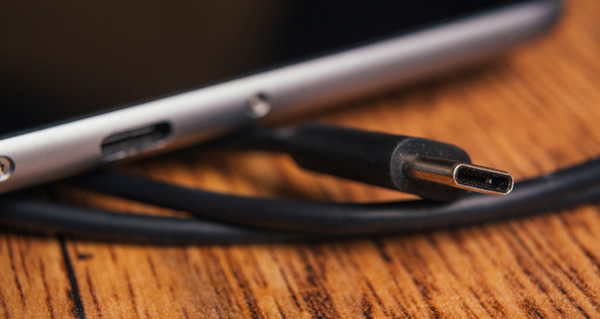What is USB-C? How does it differ from other USB types? What are its advantages? We'll talk about all that and more in this USB-C explainer.
Technology has come a long way since the first personal computer was released in 1975.

Since then, we've turned into a society where we're entrusting everything from our business needs to our health to computers. The more we ask of computers, the more we get in the way of incredible innovations that allow for the faster processing of data and transferring of information. These things have made our relationship with technology progressively seamless.
One of the best computer advances that have come to us in the last decade, in our opinion, is the USB-C.
USB-C is a type of connector that allows people to power their external devices and exchange data between them.
Below, our team breaks down everything that you need to know about USB-C, from its advantages to its drawbacks. Read on to find out more!
What Is USB-C?
USB-C, as we mentioned above, is a connector type not unlike other USB technology you're already familiar with (USB 2.0, 3.0, 3.1).
As expected from USB technology, with USB-C, you can power external devices like your phone, external hard drives, and computer peripherals. You can also transfer data between those devices.
Where USB-C stands out is that it does everything you expect from it a lot more proficiently.
Given its proficiency, USB-C is becoming an increasingly popular fixture in many of today's most popular devices. For example, the most recent generation of MacBooks has switched from standard USB-A ports to USB-C.
Furthermore, Apple TV devices and even cell phones are starting to use USB-C as their primary interface port.
Given the advantages USB-C carries with it, it's expected that its adoption will increase substantially over the next two or three years, and it will soon overtake USB 3.1 as the primary port used in new devices.
What Specific Advantages Does USB-C Have?
USB-C ports are advantageous in comparison to older USB technology in a number of ways. Here are some of their perks:
Compact Size
One of the main reasons Apple gave up USB-A ports is that they wanted to slim down the bodies of their newest generations of Macs. Standard USB type-A connections have 0.47 x 0.18-inch bodies versus USB-C's 0.33 x 0.1 inches.
That reduced size means you enjoy slimmer, more attractive tech that's also more efficient.
The Port Is Reversible
Many have messed up their USB-A ports by trying to plug their devices into them the wrong way. The good news with USB-C, however, is that the ports are 100 percent reversible.
This reversibility is similar to Apple's proprietary Thunderbolt connection.
With reversible ports, you won't have to worry about twisting your USB-C cables and potentially causing damage to your devices.
It Powers Devices Better
USB-C cables may be smaller, but they're also more powerful.
A USB-C cable can transmit up to 100 watts of energy to connected devices. This means that your electronics can get charged more quickly than with older connectors. Plus, you won't need splitter cables to fuel power-hungry peripherals.
Increased Speed
When comparing USB 3.1 technology to USB-C, USB-C doubles transfer rates.
Most USB 3.1 devices are rated for 5Gbps transfers versus USB-C's 10Gbps. That means you'll be able to manage today's increasingly bloated file sizes using USB-C in half the time than you'd have been able to with previous generations of USB.
The increased speed of USB-C ports has also made it possible to reliably transmit 8K video to external monitors.
The Drawbacks of USB-C
We're hard-pressed to find drawbacks of USB-C technology since it improves on USB predecessors in virtually every way. The only thing shoppers really need to keep in mind when buying into USB technology is a potential compatibility issue.
For example, if you use a gamepad to play video games on your PC, chances are that the USB connector on your gamepad is only compatible with USB-A ports. The same goes for more common peripherals like webcams, keyboards, and mice.
In order to remedy compatibility issues, many people purchase docks.
Docks are like power strips that feature a variety of connection types on them. One end of your dock plugs into your USB-C port, and the other end gives you the option to plug in your USB-C devices, USB-A, SD cards, and more.
Most people will find that with a high-quality USB-C dock, they'll solve any compatibility issues they were worried about and will be left to enjoy the awesome tech that is USB-C!
Leverage the Power of Technology with USB-C
When Apple released their proprietary Thunderbolt ports back in 2011, a lot of PC users felt left out using their dated USB technology. Thankfully, USB-C remedies a lot of the tech gap between Thunderbolt and USB.
Whether you're looking to transfer data faster, power more devices, or enjoy the benefit of carrying around less bulky technology, USB-C provides all of that value and more.
For that reason, we can only recommend that you start throwing your support behind what's looking to be the future of mass market data connectors!
Are you ready to start upgrading your current computer setup by getting your hands on more USB-C tech? Do you need adapters so you can make your older peripherals compatible with your new USB-C system?
Whatever your USB related needs are, our team at USB Gear has you covered.
Learn more about the C-Type USB devices we have in stock by browsing our inventory. Feel free to contact us if you need technical or sales assistance!
